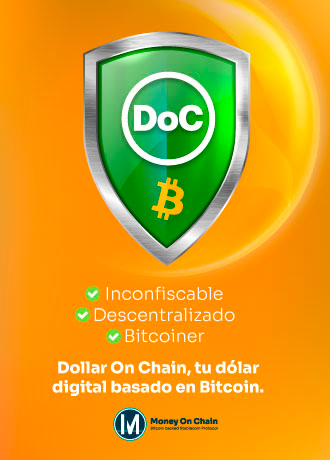El S&P 500 suma cinco jornadas a la baja y el ánimo se enfría también en Nasdaq y Dow. La volatilidad implícita descuenta para esta semana un ~0,8 % de movimiento en el índice, con el mercado en modo “esperar y ver” ante Jackson Hole.
En bonos, los Treasuries a 2 años repuntan, mientras el 10 años se mantiene relativamente estable: la curva se empina, señal de re‑precio de la senda de tasas.
El dólar (DXY) llega firme a la cita, apoyado en rendimientos más altos y en la menor probabilidad de recorte de tasas en septiembre.
Bitcoin en agosto: corrección con acople de riesgo

En paralelo, Bitcoin retrocedió casi 8 % en agosto, desde $124.000 hasta el entorno de $112.500. La caída acompasa el ajuste de otros activos de riesgo: cuando el costo del dinero sube o el mercado cree que seguirá elevado por más tiempo, las valoraciones sensibles a la tasa lo acusan de inmediato.
El vínculo entre cripto y macro volvió a tensarse: jornadas de dólar firme y rendimientos al alza coincidieron con debilidad en BTC. No es novedad, pero sí recordatorio: en semanas de bancos centrales, el flujo manda más que cualquier patrón de corto plazo.
Jackson Hole: el mensaje que puede inclinar la balanza
El discurso de Jerome Powell será la brújula inmediata.
- Escenario “dovish”: si el tono sugiere alivio de tasas más temprano o más profundo, el dólar podría ceder y los activos de riesgo recuperar impulso. Para Bitcoin, sería combustible para rebotes de alivio y prueba de resistencia en techos recientes.
- Escenario cauto/“hawkish”: si el énfasis es paciencia y datos por delante, el mercado podría prolongar la corrección con movimientos bruscos intradía. En ese caso, crece la probabilidad de barridos antes de estabilizar.
Lectura de esta semana
- Rendimientos y DXY: un alivio coordinado suele acompañar recuperaciones de BTC; nuevas subas de la parte corta de la curva y un DXY firme presionan al precio.
- Volatilidad en torno al discurso: ampliar “stop‑gaps” mentales; los primeros minutos tras Jackson Hole suelen ser ruidosos y amigos de los falsos quiebres.
- Relación con acciones: si el S&P 500 confirma el rebote que descuenta la volatilidad, el beta cripto puede seguirlo; de lo contrario, el sesgo de prudencia prevalecerá.
Sin invadir el terreno del pronóstico, el mapa de precios dejó dos hitos a la vista: $124.000 como referencia de techo reciente y $113.000 como área donde aparecieron compras en la última pata de agosto. En semanas macro, conviene pensar en zonas y no en niveles quirúrgicos: los barridos son parte del paisaje.
Para lectores tácticos, el foco pasa por confirmaciones: cierres que validen el sesgo del día después del discurso, y no solo spikes de minutos. Para inversores de más horizonte, lo relevante es si el relato de tasas cambia la tendencia de fondo o solo introduce ruido de corto plazo.
Jackson Hole suele ordenar narrativas. Si el mensaje enfría al dólar y da aire a los activos de riesgo, Bitcoin puede recuperar el pulso perdido en agosto. Si no, seguirá administrando un tramo de digestión en torno a los mínimos recientes. En cualquier caso, la lección es la misma: cuando habla la política monetaria, conviene escuchar primero y actuar después.
Columna con fines informativos. No representa asesoramiento financiero.





